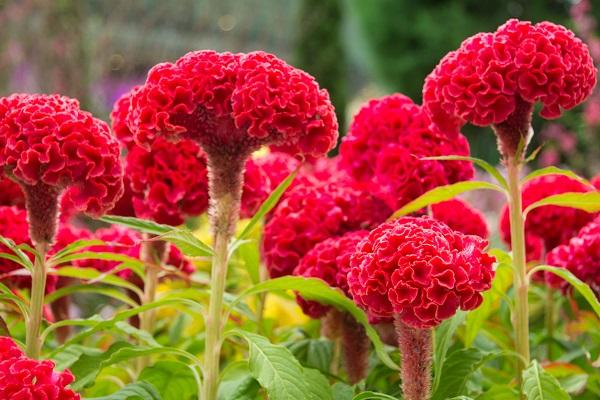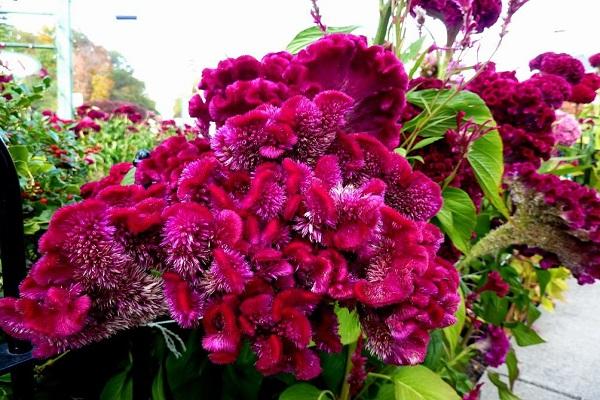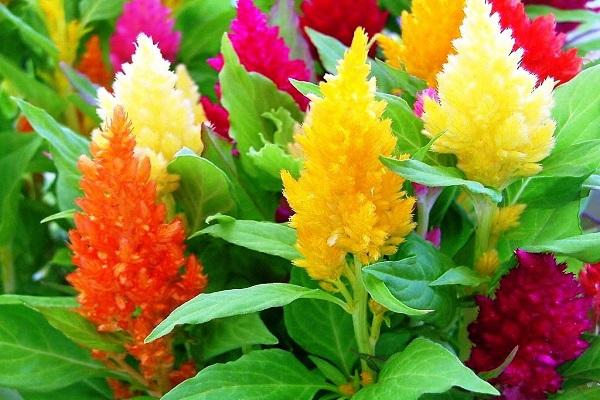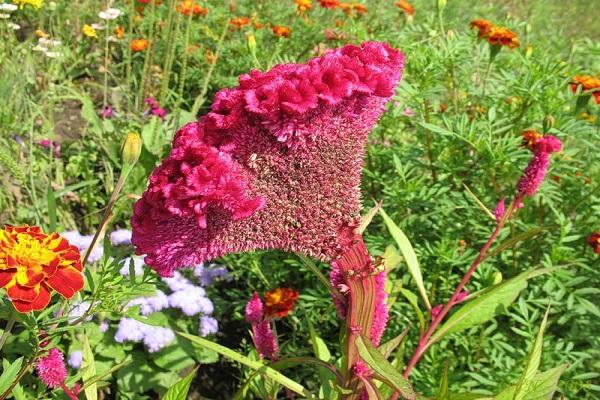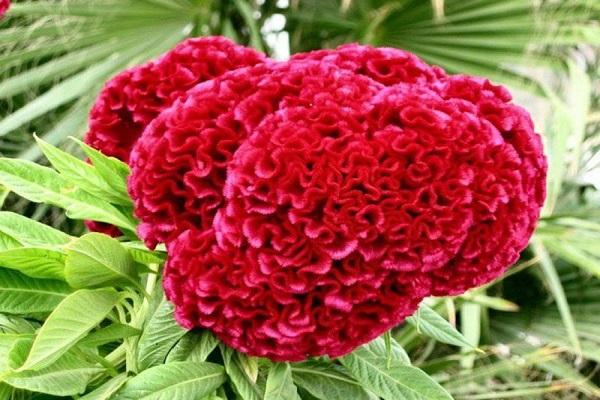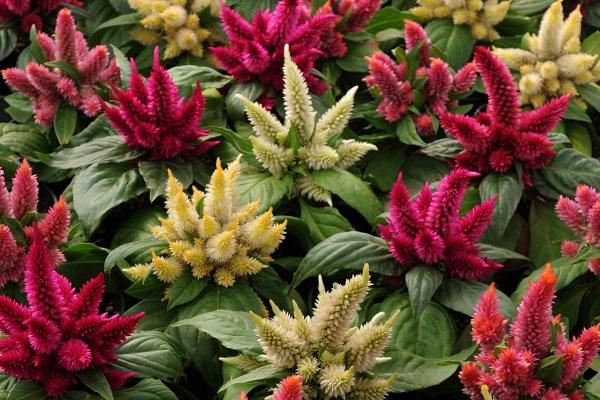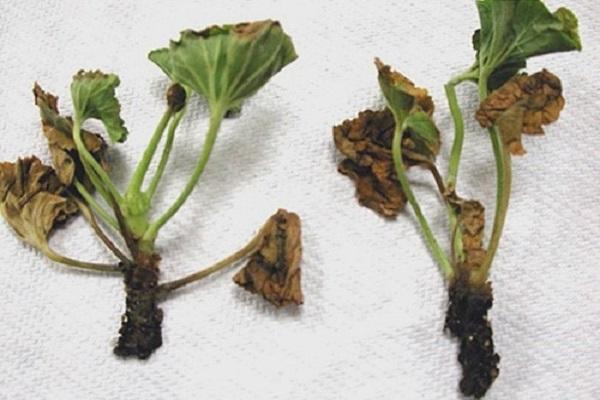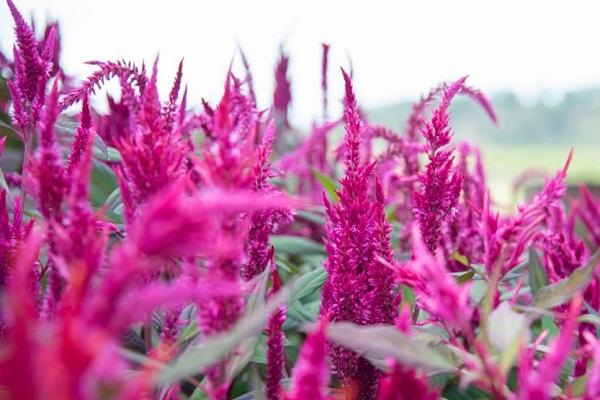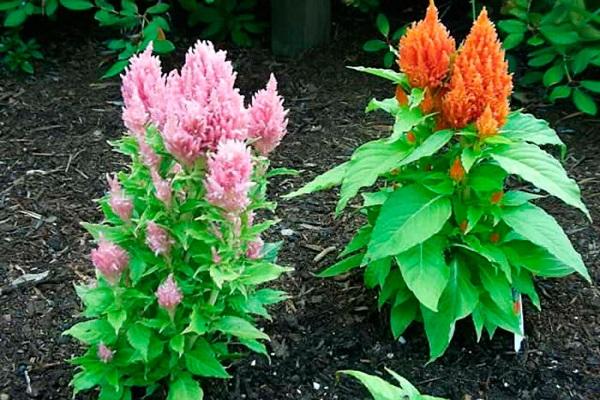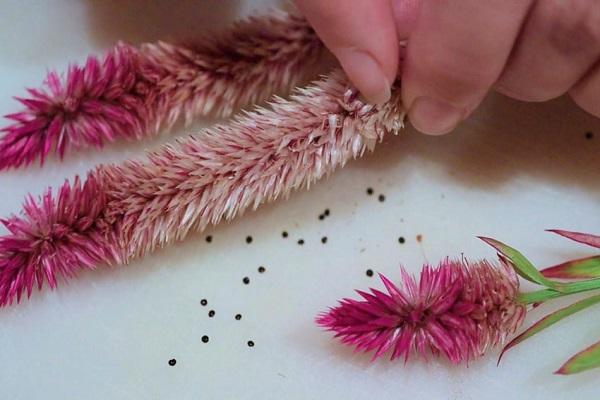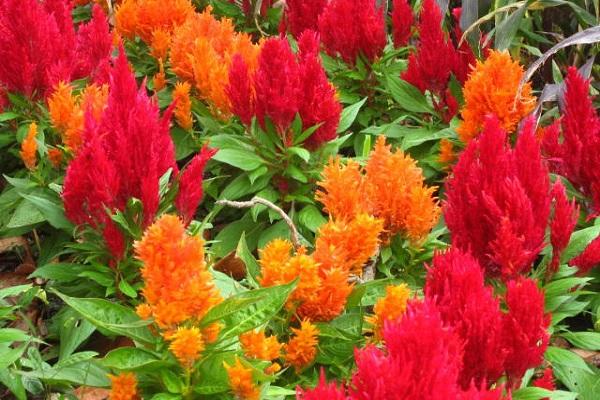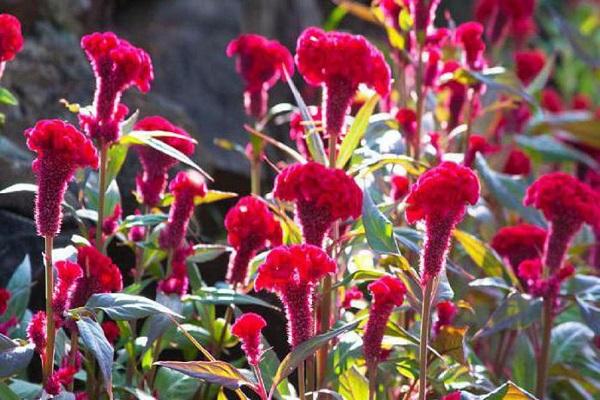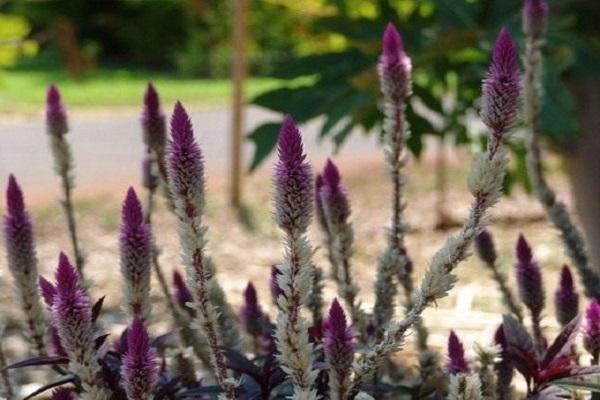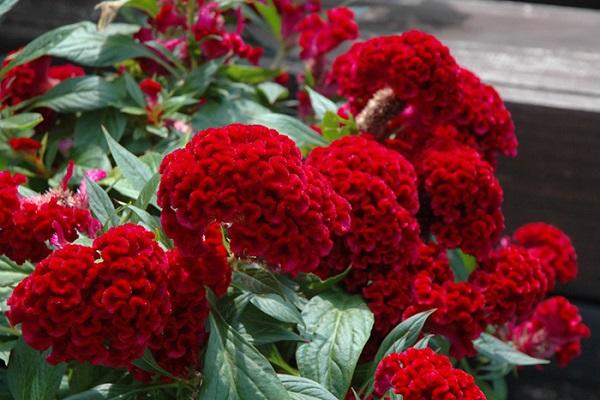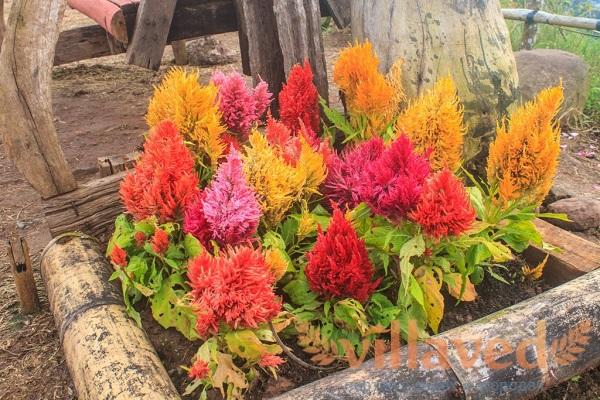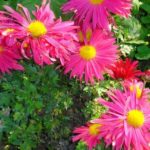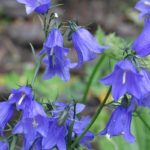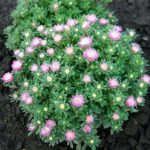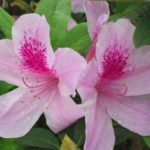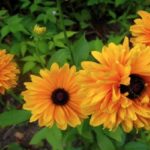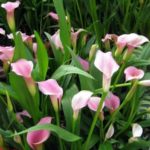In order for the area to sparkle with bright colors, it is enough to plant celosia on it. This plant can have a comb-shaped, paniculate or spike-shaped inflorescence, the color of which has a varied color palette. Bushes are planted not only in open ground, but also in pots, hanging plant pots, and used in winter in vases as dried flowers. Planting and caring for celosia is not difficult; even an inexperienced gardener can cope with its cultivation.
- Description and features
- Growing from seeds
- Sowing seedlings
- Seed preparation
- Deadlines
- Planting scheme
- Watering
- Ventilation
- Condensate removal
- Backlight
- Picking
- Top dressing
- Planting in open ground
- When to plant
- Peculiarities
- Care
- Watering
- Diseases and pests
- Blackleg
- Aphid
- Top dressing
- Loosening
- Wintering
- After flowering
- Collection and storage of seeds
- Wintering
- Kinds
- Silver comb
- Silvery pinnate
- Koloskovaya
- Popular varieties
- Impress
- Atropurpurea
- Imperialis
- Goldfeder
- Tomsoni Magnifica
- Torchshain
- New Look
- Caracas
- Flamingo
- Use in landscape design
- Reviews
Description and features
Under natural conditions, the flower reaches a height of 1 meter; in home gardens it grows up to half a meter. The stems of celosia are thick, stable, and slightly ribbed. They are green in color, with some varieties having a reddish tint. Celosia is a herbaceous perennial flower, cultivated in areas as an annual.
The leaves of the plant are oval, with smooth or wavy edges. Small flowers form large inflorescences of various colors. They are of 3 types in shape: comb, spikelet, pinnate. At the end of the season, a box with small black seeds inside is formed.
Additional Information. Celosia is not only a beautiful, but also a healing plant: it is used to treat inflammatory diseases and boost immunity. The oil from the plant is used to make cosmetics..
Growing from seeds
Celosia is grown by seed method, first sowing it as seedlings, then transplanting the seedlings into open ground.
Sowing seedlings
The sowing time is calculated in such a way that when transplanting bushes into open ground, the threat of frost has passed. It takes 35-45 days from sowing seeds to planting seedlings. You can sow in a greenhouse or in boxes that are kept on a heated loggia or veranda.
Seed preparation
Since the seed shell is hard, pre-soaking will be required. To do this, use a solution of Zircon or Epin in a dosage of 1 drop per 200 grams of water. The seeds are immersed in the emulsion for 3-4 hours.
Deadlines
In the southern regions, sowing begins in mid-March, in areas with a harsher climate - in early April. When planting celosia at this time, the young seedlings will have time to grow stronger, harden and will easily tolerate transplantation. The time for sowing seeds in open ground is the end of April or the beginning of May. The soil must be covered with film to protect it from frost, as well as for faster germination of seedlings.
Planting scheme
Seeds are sown in shallow boxes filled with loose soil. It is moistened with a spray bottle, then the seed is laid out at a distance of 2-3 centimeters, seed from seed. Sprinkle a small layer of sand on top. To avoid having to pick celosia, it can be sown in peat pots, which are then planted in open ground.
Watering
Watering is done as needed. The soil should not be dry, but constantly wet soil can lead to plant disease. Seedlings need to be sprayed with water from a spray bottle: in this case there will be no waterlogging, and the seeds will not go deeper due to watering.
Ventilation
After sowing, the box is covered with glass or film to create greenhouse conditions. The mini-greenhouse is ventilated every day, otherwise a fungus may form that has a detrimental effect on the seedlings. When the first shoots appear, the shelter is removed.
Condensate removal
When ventilating the mini-greenhouse, condensation is removed from the glass or film. This must be done to prevent the formation of pathogens. A fungus formed in a humid environment can destroy seedlings.
Backlight
In spring, daylight hours are short, so seedlings need additional lighting. Phytolamps are used for this. Additional lighting is used in the morning and evening.
Picking
When the seedlings have 2-3 leaves, they are thinned out, leaving a distance of 4-5 centimeters between them.Removed plants can also be planted in seedling boxes. When the seedlings reach 10-12 centimeters, they are planted in separate containers. If you transplant celosia into peat pots and then plant it, the material, rotting, will serve as additional nutrition.
Top dressing
Seedlings are fertilized twice: the first time after planting, the second time - 2 weeks before planting the seedlings in the flowerbed. For this purpose, complex fertilizing is used, consisting of nitrogen, phosphorus, potassium, as well as other useful substances. Before watering celosia with fertilizers, the soil is moistened with plain water.
Important! Before planting in a permanent place, the bushes must be taken out into fresh air for 30-60 minutes to harden.
Planting in open ground
The area for planting celosia should be well lit by sunlight and protected from strong gusts of wind. Bushes prefer light, breathable soil. If the soil is acidic, it must first be limed.
When to plant
Seedlings are planted in open ground from mid-May. During this period, the earth is already well warmed up, and the threat of frost has passed. By this time, the celosia bushes are strong and hardened, ready to be transplanted to a permanent location.
Peculiarities
The seedlings have a delicate root system, so transplantation must be done very carefully. To do this, the plants are removed from the pots and, without breaking the earthen ball, planted in open ground. Tall bushes are planted at a distance of 25-30 centimeters from one another, while low-growing bushes need a distance of 15-20 centimeters.
Care
Plants planted in a flowerbed require timely watering, loosening, fertilizing, and protection from diseases and pests. In this case, they will delight you with flowering until frost.
Watering
When watering celosia, you need to take into account that it will more easily tolerate short-term drought than waterlogging. Even if the plant is a little wilted, it will recover after the first watering. It is preferable to moisten the flower in the morning, before the burning rays of the sun appear. In too dry summers, celosia can be sprayed from above.
Diseases and pests
Like every plant, celosia can be subject to diseases and pest attacks. Most often this happens due to improper care.
Blackleg
When bushes are watered frequently, or the soil in which they grow is too dense and water stagnates in the upper layers, a disease called blackleg may occur. Affected bushes are removed, and the ground under them is irrigated with antifungal drugs. Further watering is reduced, and after the procedure the soil is loosened to allow air to reach the roots.
Note! Celosia will tolerate short-term drought more easily than excessive soil moisture.
Aphid
Aphid colonies can destroy celosia by sucking the juice from the trunks and leaves. To get rid of it, insecticides are used. Gardeners who do not allow the use of chemicals can use a solution of the following composition:
- 400 grams of water;
- 200 grams of vegetable oil;
- 20 grams of grated laundry soap.
The ingredients are thoroughly mixed and filtered through cheesecloth. The bushes are sprayed with a suspension in the evening every 2 days.
Top dressing
Celosia can develop without the use of fertilizers, but their use will contribute to a more decorative appearance of the bushes. Under the plantings you need to pour a complex fertilizer for flowering plants. The frequency of fertilization is 1-2 times a month. Before the procedure, celosia is irrigated with plain water.
Loosening
To prevent the bushes from being affected by fungal diseases, as well as to provide air access to the roots, you need to loosen the soil after each watering. During this procedure, weeds that suppress the development of flowers are simultaneously removed. To retain moisture and prevent weed growth, the soil around the bushes is mulched.
Wintering
Celosia is not a frost-resistant plant, so when cold weather sets in, it dies. If the bushes grow in containers, then in the fall they are brought into a warm room. At a temperature of +5°C, flowering stops.
After flowering
When the flower finishes blooming, the gardener can collect seed material for propagating celosia in the next season.
Collection and storage of seeds
To collect seeds, you must follow these steps:
- cut stems with peduncles;
- place them in a vase without liquid, where they ripen and dry;
- Place the container with the plant on paper or newspaper, on which the ripened seeds will fall out.
The collected seed material is collected, placed in paper bags, and stored in a dry room.
Wintering
Since celosia is not winter-hardy, after flowering in late autumn it is dug up and burned. Since it is a dried flower, the stems with inflorescences can be cut and hung to dry or placed directly in a vase. In this case, the colors of the celosia will fade a little, but, nevertheless, it will serve as a winter decoration for the room.
Advice! To admire the spectacular celosia inflorescences all winter, you need to cut off the flower arrows and place them in a vase without water.
Kinds
There are more than 60 species of celosia in nature. Three of them are common for cultivation in gardens: silver comb, spikelet, and silver pinnate.
Silver comb
Celosia of this species reaches a height of 45 centimeters. It has large green leaves, shimmering with metal, and round or umbrella-shaped inflorescences. The top is shaped like a scallop, which is why it is called celosia comb. It blooms spectacularly until frost, and celosia paniculata combines beautifully next to it.
Silvery pinnate
Paniculate or pinnate celosia reaches a height of 1 meter, but some varieties are stunted and even dwarf. The plant got its name from its panicle-shaped inflorescences. Their color varies from yellow to dark red.
Koloskovaya
This type of tall celosia is not yet in demand among gardeners, but, nevertheless, it is no less spectacular than other types. The spike-shaped flower arrow comes in white, yellow, orange, and red colors. Plants look spectacular when dried.
Popular varieties
Each type of celosia is represented by different plant varieties, the most popular of which are described below.
Impress
The leaves of this variety of Celosia comb are purple in color. The inflorescences have the same color.
Atropurpurea
The stem of Celosia comb is pink-red in color. The leaves are green, oblong; convex veins are purple in color.
Imperialis
The variety is low-growing: comb celosia bushes grow no higher than 25 centimeters in height. Its leaves are dark red, almost burgundy. The inflorescences are purple.
Goldfeder
This is one of the varieties of Celosia silvery pinnate. The color of the plant's inflorescences is golden yellow. The height of low-growing bushes is 23-25 centimeters.
Tomsoni Magnifica
The plant reaches a height of 80 centimeters. The foliage is green, the paniculate inflorescences are burgundy.
Torchshain
The same tall plant, but the feathery inflorescences are colored red.
New Look
The height of the bushes is about 40 centimeters. Large feathery inflorescences are painted red.
Caracas
This is a tall variety: with good care it reaches a height of 1 meter. The leaves of celosia are green, the inflorescences are pink-purple.
Flamingo
The bushes are tall, erect, their height is about 80 centimeters. Spike-shaped flower arrows are painted pink.
Use in landscape design
Celosia is loved not only by amateur gardeners, but also by landscape designers. Flowerbeds are decorated with it, low-growing varieties are hung in flower pots, or grown in pots, creating a mix of bushes of different colors. Celosia can be a background for ground cover plants, as well as a middle ground for taller decorative deciduous green plantings.
Reviews
According to reviews from flower lovers, celosia is an unpretentious plant that even a novice gardener can grow. For this reason, the flower is a welcome guest in the garden, flower bed, and mixborder.
Natalia, Krasnodar:
I sowed the seeds in May directly into the ground and covered them with film. The spring was warm, and my flowers sprouted quickly. In the summer I only watered it and did not feed it. From the beginning of July, celosia began to bloom. I was pleased with the flowering until the coldest weather.
Svetlana Ivanovna, Chisinau:
Last year I purchased celosia seedlings of the Goldfeder variety. All the neighbors came to admire the bright yellow inflorescences. In the fall, I collected seeds and distributed them to everyone. This year I will continue growing the flower.
Raisa, Moscow region:
I bought celosia seeds at the market from a flower girl. She said it was a mixture of different varieties. And indeed, in the flowerbed there was a mix of bushes with different structures and colors of inflorescences. The plants were the brightest spot on my site this year.

